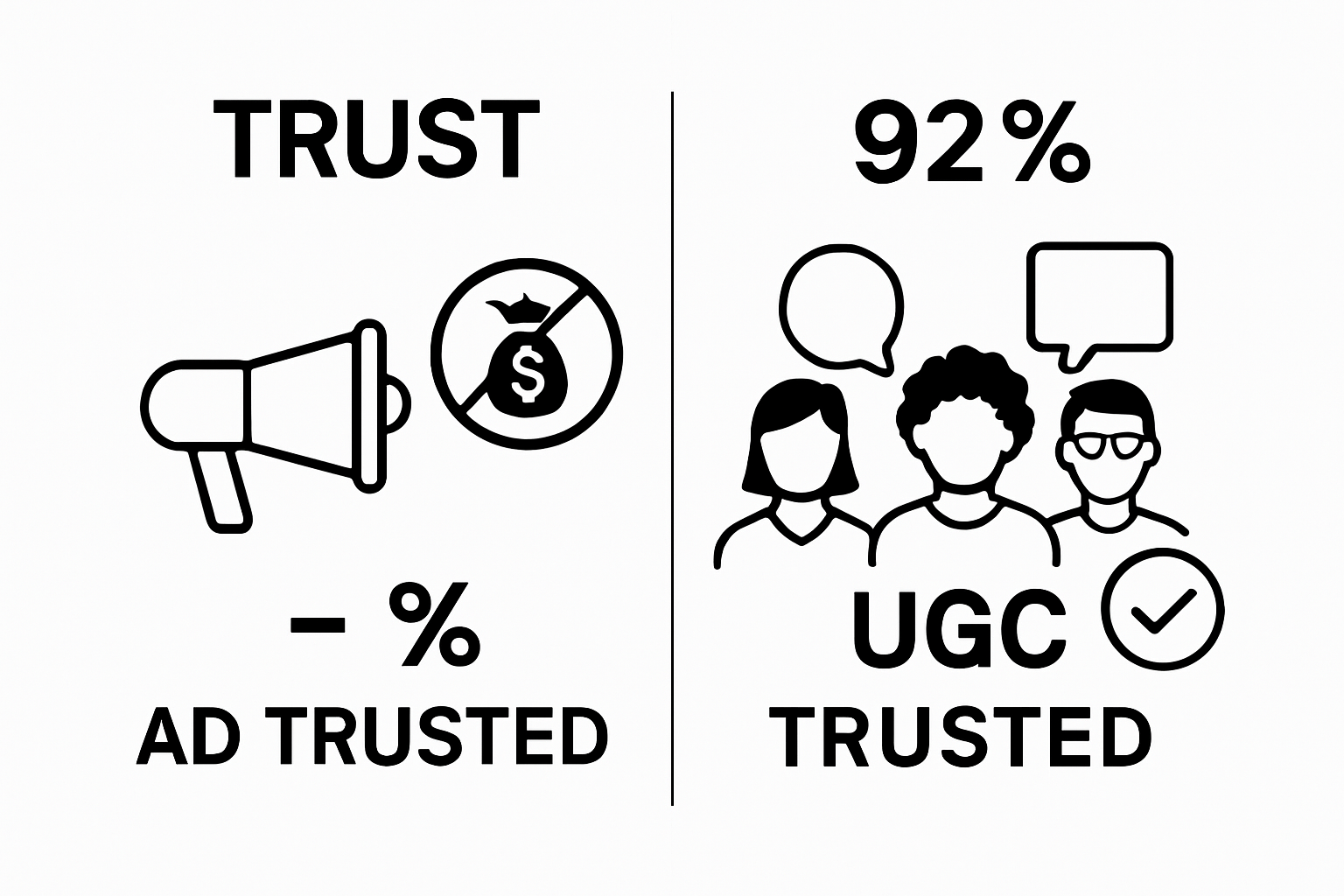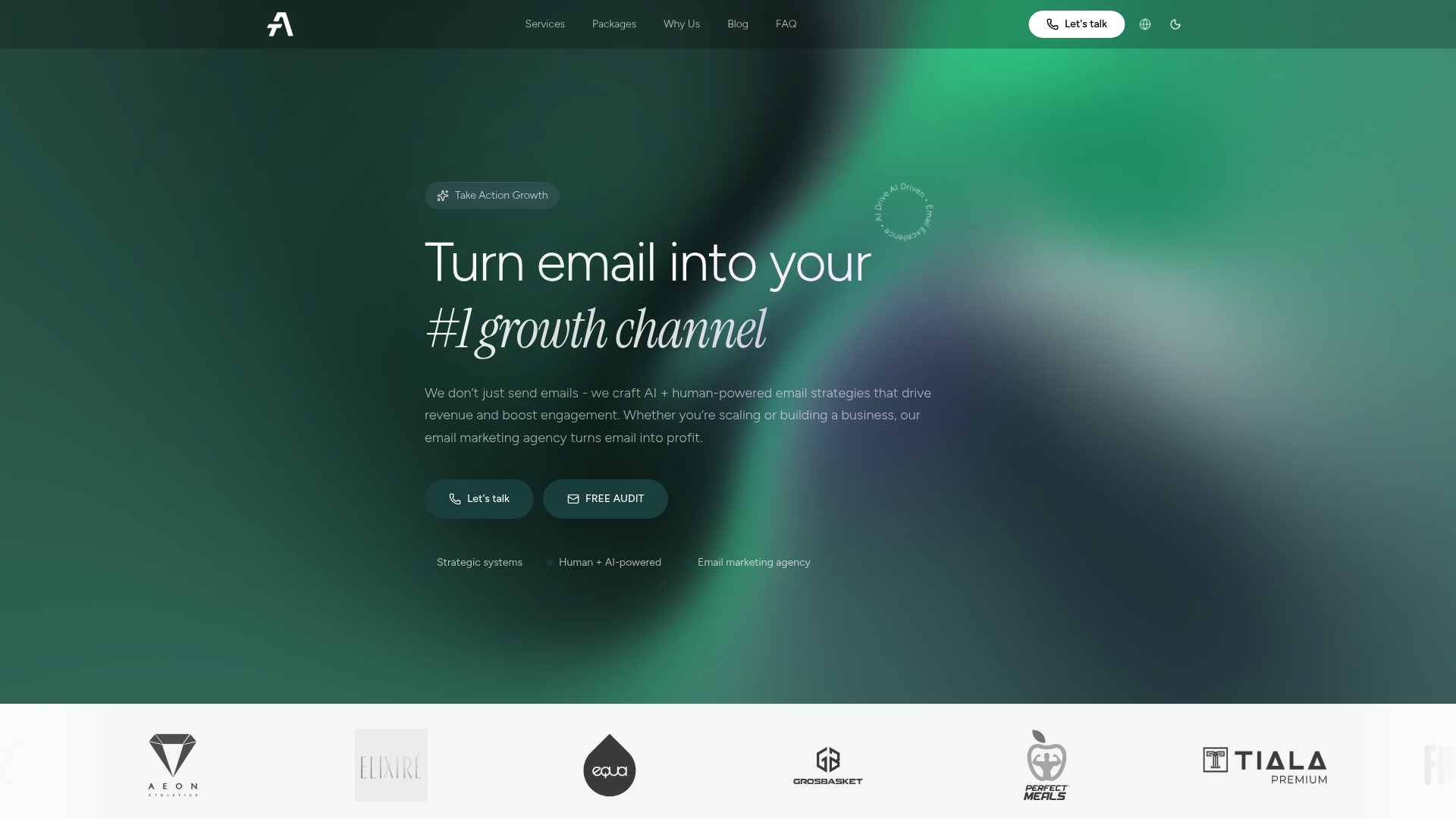Understanding UGC in Marketing: A Deep Dive
User Generated Content—or UGC—has shifted the power of advertising from big brands to everyday people. A Nielsen study found that 92% of consumers trust organic, user-created content more than traditional ads. That sounds like the marketers might be out of a job. But what actually happens is brands get stronger and more trusted when they let their real customers do the talking.
Table of Contents
- What Is UGC In Marketing?
- Why UGC Matters For Brands
- How UGC Influences Consumer Behavior
- Key Concepts In UGC Strategy
- Real-World Examples Of UGC In Action
Quick Summary
| Takeaway | Explanation |
|---|---|
| UGC enhances brand authenticity | User Generated Content provides genuine insights that traditional advertising cannot offer, making brands appear more trustworthy. |
| Consumers trust UGC over traditional ads | 92% of consumers prefer organic, user-created content, emphasizing the need for brands to leverage UGC for better engagement. |
| UGC boosts customer engagement | Brands utilizing UGC experience significantly higher engagement rates and conversion potential compared to traditional marketing methods. |
| Create guidelines for UGC collection | Clear submission guidelines ensure quality control and maintain brand integrity while encouraging creativity from users. |
| Foster community engagement through UGC | Encouraging users to create and share content transforms them from passive consumers into active contributors, deepening brand connections. |
What is UGC in Marketing?
User Generated Content (UGC) represents a powerful marketing strategy where brands leverage authentic content created by their customers, fans, and followers. Unlike traditional advertising, UGC transforms everyday consumers into brand storytellers, creating a more genuine and relatable marketing approach.
The Core Definition of UGC
UGC encompasses any form of content voluntarily produced by users about a brand, product, or service. This can include social media posts, customer reviews, testimonials, photos, videos, and blog posts.
To help clarify the unique characteristics of User Generated Content (UGC), the table below summarizes its main features and how they distinguish UGC from traditional brand-created content.
| Characteristic | Description |
|---|---|
| Voluntarily Created | Content is produced by consumers without direct payment. |
| Authentic Perspectives | Offers genuine, unfiltered viewpoints from real users. |
| Unpaid/Non-commissioned | No financial incentive drives initial content creation. |
| Shared on Digital Platforms | Distributed via social media, review sites, or online forums. |
| Includes Various Content Types | Encompasses reviews, photos, videos, testimonials, and blogs. |
| Relatable and Trustworthy | Seen as more trustworthy than brand-crafted advertising. |
The primary characteristics of UGC include:
- Content created voluntarily by consumers
- Authentic and unfiltered perspectives
- Unpaid or non-commissioned content
- Shared across various digital platforms
Why Brands Value UGC in Marketing
Brands recognize UGC as a trust-building tool that provides social proof and credibility. Unlike polished brand-generated content, user-generated material feels more genuine and relatable. Take Action’s guide on user generated content benefits explores how UGC can transform marketing strategies by creating deeper consumer connections.
Consumers are more likely to trust recommendations from real people over traditional advertising. A Nielsen study revealed that 92% of consumers trust organic, user-created content more than traditional advertising, making UGC an invaluable marketing asset.
 This organic approach allows brands to showcase real experiences, creating emotional connections that resonate far more powerfully than scripted marketing messages.
This organic approach allows brands to showcase real experiences, creating emotional connections that resonate far more powerfully than scripted marketing messages.
Why UGC Matters for Brands
User Generated Content (UGC) has transformed how brands connect with their audiences, offering unprecedented opportunities for authentic marketing and customer engagement. Beyond traditional advertising methods, UGC represents a powerful strategy that fundamentally shifts brand communication dynamics.
Building Consumer Trust and Credibility
Modern consumers are increasingly skeptical of polished corporate messaging. Research from Sprout Social reveals that 90% of consumers prioritize brand authenticity when making purchasing decisions. UGC serves as a critical mechanism for establishing genuine connections by showcasing real customer experiences and perspectives.
Key trust-building attributes of UGC include:
- Direct peer recommendations
- Unfiltered product experiences
- Transparent and relatable narratives
- Emotional resonance with potential customers
Economic and Engagement Impact
UGC delivers substantial economic benefits beyond traditional marketing strategies. According to multiple marketing studies, brands utilizing UGC experience significantly higher engagement rates and conversion potential. Take Action’s guide on brand consistency highlights how authentic content can reinforce brand messaging while reducing marketing production costs.
The quantifiable advantages of UGC are compelling. Brands incorporating user-generated content see measurable improvements in key performance metrics such as:
The following table highlights key statistics and research findings from the article, offering a quick overview of UGC’s measurable impact on consumer trust, engagement, and brand performance.
| Statistic or Source | Key Finding or Impact |
|---|---|
| Nielsen study | 92% of consumers trust organic, user-created content over ads |
| Stackla Consumer Content Report | 79% say UGC highly impacts their purchasing decisions |
| Sprout Social research | 90% of consumers value brand authenticity in purchase decisions |
| Content Marketing studies | 50% lower cost per engagement using UGC |
| Content Marketing studies | 29% higher web conversion rates when UGC is used |
| Nielsen consumer trust research | 83% trust recommendations from people they know |
- 50% lower cost per engagement compared to traditional advertising
- 29% higher web conversion rates
- Enhanced customer loyalty and retention
Moreover, UGC creates a participatory marketing ecosystem where customers become active contributors rather than passive recipients of brand messaging. This collaborative approach not only generates valuable content but also fosters a sense of community and brand ownership among consumers.

How UGC Influences Consumer Behavior
User Generated Content (UGC) profoundly shapes consumer psychology and purchasing decisions by providing authentic, peer-driven perspectives that traditional marketing cannot replicate. The psychological mechanisms behind UGC’s influence are deeply rooted in social proof, emotional connection, and trust dynamics.
Psychological Triggers of UGC
Nielsen’s consumer trust research demonstrates that 83% of consumers trust recommendations from people they know over all other advertising forms. This phenomenon reveals how UGC taps into fundamental human behaviors of seeking validation and social consensus before making purchasing decisions.
Key psychological triggers driving UGC’s impact include:
- Social validation through peer experiences
- Reduced perceived purchase risk
- Emotional resonance with real customer stories
- Increased perceived product authenticity
Decision Making and Consumer Confidence
UGC acts as a powerful decision-making catalyst by providing transparent, unfiltered insights into product performance and brand experience. Take Action’s influencer marketing guide explores how authentic content bridges the gap between brand messaging and consumer expectations.
Consumers rely on UGC to:
- Validate product claims
- Understand real-world product functionality
- Compare experiences across different user segments
- Mitigate purchase uncertainty
By presenting genuine, relatable narratives, UGC transforms passive consumers into active participants in brand storytelling. This collaborative approach not only influences immediate purchasing decisions but also builds long-term brand loyalty through transparent, community-driven communication.
Key Concepts in UGC Strategy
Developing an effective User Generated Content (UGC) strategy requires a nuanced understanding of content creation, audience engagement, and strategic implementation. Brands must move beyond simply collecting content to creating meaningful, mutually beneficial interactions with their communities.
Content Curation and Quality Control
Content Marketing Institute’s research emphasizes the importance of establishing clear guidelines and moderation processes for UGC. Successful strategies require a balanced approach that encourages creativity while maintaining brand integrity and quality standards.
Key considerations for content curation include:
- Developing clear submission guidelines
- Creating a transparent review process
- Establishing content usage permissions
- Maintaining brand voice and aesthetic consistency
Incentivization and Community Engagement
Effective UGC strategies go beyond passive content collection. Take Action’s guide on educational content highlights the importance of creating meaningful engagement opportunities that motivate users to create and share content.
Strategic approaches to UGC incentivization involve:
- Designing compelling content challenges
- Offering recognition or rewards
- Creating platforms for community showcase
- Developing interactive brand experiences
The most successful UGC strategies transform customers from passive consumers into active brand collaborators. By providing clear value propositions and creating meaningful engagement pathways, brands can develop a dynamic, self-sustaining content ecosystem that drives authentic marketing and deep customer connections.
Real-World Examples of UGC in Action
User Generated Content strategies have transformed how brands interact with their audiences, turning customers into active brand storytellers and content creators. These real-world examples demonstrate the powerful potential of authentic, community-driven marketing approaches across different industries.
Consumer Product Success Stories
Adweek’s marketing analysis highlights Starbucks’ innovative White Cup Contest as a prime example of UGC strategy. By inviting customers to decorate their coffee cups and share designs online, Starbucks transformed a simple interaction into a massive engagement campaign that generated thousands of creative submissions.
Notable consumer product UGC campaigns include:
- Coca-Cola’s Share a Coke personalized bottle campaign
- GoPro’s user-submitted adventure video collections
- Nike’s athlete-driven social media storytelling
- Airbnb’s traveler experience photo submissions
Technology and Service Sector Innovations
Take Action’s guide on educational content underscores how brands can leverage user experiences to create compelling narratives. Technology companies have been particularly adept at integrating UGC into their marketing strategies, turning customer testimonials and usage stories into powerful promotional tools.
Technology sector UGC approaches demonstrate:
- Customer review platforms as trust-building mechanisms
- User tutorial and walkthrough content
- Community forums showcasing real-world product applications
- Interactive beta testing and feedback programs
These examples illustrate how UGC transcends traditional marketing boundaries, creating genuine connections between brands and their audiences through authentic, collaborative storytelling.
Turn Authentic UGC into Powerful Email Revenue
You recognize that authentic User Generated Content creates trust and drives decisions. But are you leveraging those real customer stories inside your email channel to achieve measurable growth? Many brands collect UGC but struggle to turn it into engaging, automated campaigns that consistently boost retention and sales. Without a strategic system, UGC remains an untapped asset and your email efforts never achieve their true potential.

Now is the time to combine the power of UGC with data-driven email marketing. At Take Action, we specialize in helping ecommerce and digital brands weave social proof and customer experiences into automated emails for higher open rates, stronger brand loyalty, and increased revenue. Explore how our Klaviyo automation and campaign strategies can help you scale genuine engagement and recover more abandoned carts. Ready to unlock the next level of growth using content your audience already trusts? Visit Take Action and see exactly how your brand can stand out and convert today.
Frequently Asked Questions
What is user-generated content (UGC) in marketing?
User-generated content (UGC) refers to any content—such as posts, reviews, photos, or videos—created by consumers that showcases their experiences with a brand, product, or service. It serves as a powerful marketing tool by providing authenticity and relatability compared to traditional advertising.
Why is UGC important for brands?
UGC is vital for brands because it builds consumer trust and credibility. Consumers often trust recommendations from real users more than polished advertisements, making UGC an effective strategy for enhancing engagement, increasing authenticity, and creating emotional connections with potential customers.
How can brands encourage the creation of UGC?
Brands can encourage UGC by designing interactive content challenges, offering recognition or rewards for contributors, creating platforms for users to showcase their content, and maintaining ongoing engagement with their community to foster collaboration and creativity.
What are the economic benefits of implementing UGC strategies?
Implementing UGC strategies can lead to several economic benefits, including lower costs per engagement, higher web conversion rates, and enhanced customer loyalty. Brands utilizing UGC often experience improved performance metrics compared to traditional marketing approaches.
Recommended
- Understanding User Generated Content Benefits for Brands | Take Action Blog | Take Action
- Influencer Marketing Explained: 2025 Guide for Business Growth | Take Action Blog | Take Action
- 10 Proven Ways to Increase Online Sales in 2025 | Take Action Blog | Take Action
- Understanding Marketing Automation Explained Simply | Take Action Blog | Take Action
- User-Generated Content: Boost Brand Trust and Engagement
